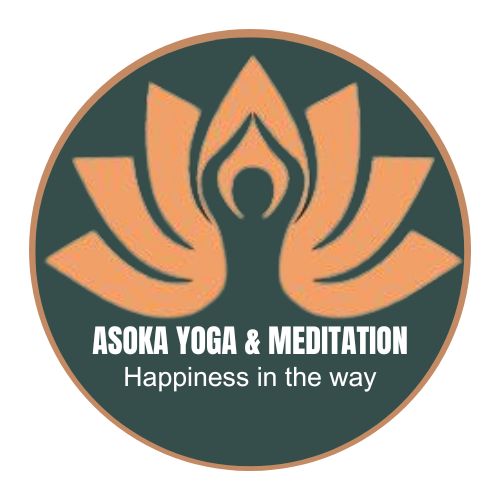Introduction to Meditation
Meditation is a mental exercise that trains attention and awareness. Its purpose is often to limit reactions to one’s negative thoughts and emotions, which are often fleeting and not worth worrying about. Meditation can provide many psychological health benefits, such as reducing stress, improving concentration and increasing happiness. There are different types of meditation, such as mindfulness, loving-kindness, mantra, and movement. Each type has its own techniques and goals, depending on the practitioner’s needs and preferences. So there are times when you have practiced MEDITATION but you don’t know it is meditation. So let Asoka Yoga & Meditation learn some forms of meditation in the next section!


Mindfulness Meditation
Meditation is a practice that involves training your attention and awareness to achieve a state of calm and well-being. Mindfulness is one of the most popular types of meditation, focusing on being present and accepting your thoughts, emotions, and feelings without judgment. Mindfulness meditation can help you reduce stress, improve focus, and increase happiness. There are many different ways to practice mindfulness meditation, such as breathing exercises, guided imagery, or body scans. You can also practice mindfulness during daily activities such as eating, walking, or listening to music.In Vietnam, meditation was introduced into life quite early. From the 13th to 14th centuries, many meditation centers appeared in the North. Currently, there are many religious and spiritual meditation centers, but there are also many meditation centers for health purposes.

Movement meditation
Movement meditation is a type of meditation that involves using physical activity, such as walking, yoga, tai chi or dancing, to focus the mind and cultivate awareness. Meditative movement can help you connect with your body, breath, and sensations, while reducing stress, improving your mood, and enhancing your health. There are many different types of meditation movements, depending on the type of movement, level of intensity, and purpose of practice. Some examples of meditative movements are:
- Walking meditation. This is a simple and accessible form of moving meditation that involves walking slowly and mindfully, paying attention to each step, leg movement and sensation in the feet. You may also notice your surroundings, such as sounds, sights, smells, and the feel of the environment.
- Yoga. Yoga is a popular and well-known form of meditative movement that combines physical postures, breathing exercises, and mental focus.
- Tai Chi. Tai Chi is a form of meditation that originated in China. It involves performing a series of slow and graceful movements, one after another.
- Qigong. Qigong is another form of meditation that originated in China. It involves using gentle movements, breathing techniques and mental visualization to cultivate and balance your life force energy or chi.
- Mindful dancing. Mindful dancing is a form of meditative movement that involves moving your body freely and expressively without following any specific steps or rules.
